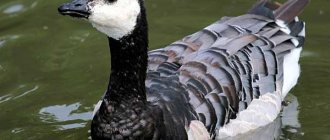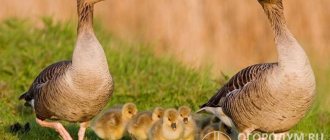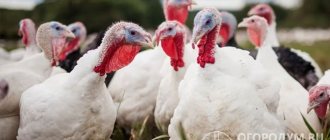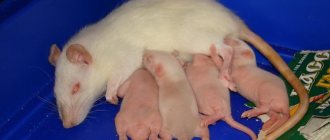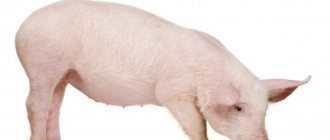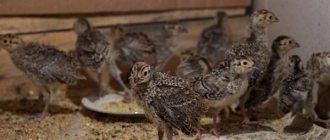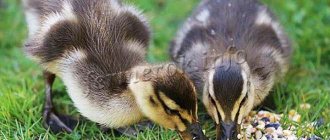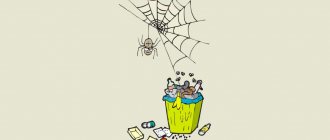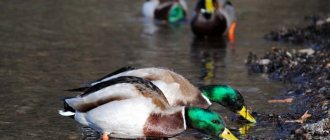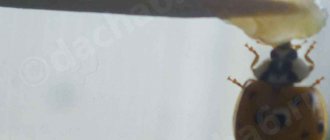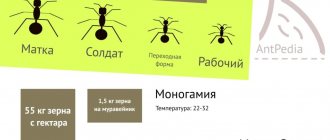Pigeons can be found on any street in a city or village.
These birds have long and firmly taken their place in the neighborhood of humans. We often see people generously scattering various cereals and crusts of bread to feed the birds. But how many people are interested in what you can feed pigeons so as not to harm their health? Street birds are not too picky; they eat everything that comes under their feet. The problem is that such a diet has a detrimental effect on the condition of their gastrointestinal tract. Over time, the bird develops severe illnesses and dies. It is significant that this bird lives on the street for about 2-5 years, while its theoretical life expectancy is 20 years. Such a huge difference depends primarily on what the pigeon eats.
What do pigeons eat
Pigeons are one of the most common types of birds in the city.
Most people believe that feeding pigeons is necessary with bread and seeds. These products are indeed the basis of the diet of urban pigeons, but the birds need adequate nutrition.
Growth requires a variety of feeds. This is especially true for domestic pigeons of rare breeds. It is precisely because of the need for a varied diet that the lifespan of the urban pigeon is reduced.
Under natural conditions in summer, pigeons eat grass and plant shoots, seeds, and grains. Due to their adaptability to feeding in parks and squares, birds do not receive enough of the active substances they need from human hands.
Their body especially suffers due to the lack of enzymes that are necessary to digest baked goods. Because of this, food remains in the stomach for quite a long time and begins to rot.
This can lead to inflammation of the mucous membrane (gastritis). Indigestible food stored in the digestive organs for a long time prevents the consumption of other foods.
How feeding pigeons affects the environment
Many scientists and politicians are against feeding pigeons on the streets due to the fact that the birds heavily pollute the environment with the products of their vital activity. In addition, such help contributes to their rapid reproduction. Normally, pigeons give birth twice a year, but in urban conditions this figure has increased to 8 times. Thus, the population of these birds has increased significantly.
Bird nests block drains and become a haven for various parasites, such as bird mites. In addition, pigeons are not able to eat all the food that people throw at them, so leftover food attracts crowds of rats.
Feeding outdoor pigeons
Animals living outdoors most often feed on shoots and grasses. In the absence of additional feeding, the birds will find food on their own. These will be seeds, grains of various cereals, grass leaves.
For purebred pigeons, such feeding will be quite balanced from spring to autumn.
However, often in cities, workers of housing and communal services and public improvement agencies mow the grass and trim the leaves of trees, removing opportunities for adult birds to feed.
Be sure to read:
Symptoms and treatment of 10 common diseases of pigeons that are dangerous to humans
Therefore, the feathered inhabitants of cities can starve, eating crumbs of bread or rolls, cereals and other products from human hands.
What not to feed pigeons
Pigeons living outdoors most often feed on shoots and grasses.
You should definitely avoid the following foods:
- Black and rye breads. Lead to fermentation, bloating, diarrhea. In turn, it provokes the appearance of problems with the gastrointestinal tract. In the worst case, the bird may die.
- Meat food. Pigeons are not birds of prey; they do not secrete enzymes that digest meat in their stomachs. Therefore, this type of food gradually rots inside the body, which leads to gastritis, ulcers and death.
- Milk and fermented milk products - substances lead to the death of the microflora of the gastrointestinal tract and dysbacteriosis. Calcium is also removed from the bird's body.
- Fish. Due to the high phosphorus content in the product, such food is prohibited. Birds are unable to digest fish.
- Sunflower seeds. Feeding such food leads to mechanical damage to the crop; the peel causes liver problems in birds. In addition, the sharp parts of the peel lead to damage to the intestinal mucosa. In the worst case, peritonitis sets in and the bird dies.
The role of various substances in the diet
The table will allow you to understand the importance of nutrients for blue-winged birds.
The role of vitamins in the body
| Vitamins | What products contain | Importance for the body |
| A | Corn (yellow), juicy greens, carrots, egg yolk, pumpkin | The need increases during the reproduction period; its deficiency causes damage to the mucous membranes and eye diseases. |
| Group B | Bran, greens, yeast, grains | Normalizes the functioning of the cardiovascular and nervous system, improves metabolism, their deficiency provokes paralysis, the process of hatching eggs is difficult |
| WITH | Green vegetables, various root vegetables | Increases immunity, normalizes intracellular metabolism |
| D | Legume grass, dried in shaded areas, fish oil | Improves the process of phosphorus-calcium metabolism, promotes the formation of a complete eggshell and maintains the integrity of bones. If there is a deficiency, the egg hatching process becomes more difficult |
| E | Greens, eggs, fortified hay, bran, sprouted grains | Required to produce full-fledged healthy offspring; in case of deficiency, the functioning of the reproductive system is impaired |
| TO | Chopped spinach, cabbage, nettles, and other green parts of plants | Normalizes the functioning of the blood coagulation system |
But pigeons require more than just vitamins. The role of minerals should not be underestimated.
The importance of micro and macroelements
| Elements | Importance for the body |
| Phosphorus, calcium, magnesium | Provides the possibility of forming a dense shell and developing bone tissue |
| Sulfur | Required during molting; in conditions of deficiency, the condition of the feather cover worsens |
| Potassium, sodium | Designed to normalize fat, water, mineral, salt metabolism, help improve the process of assimilation of incoming nutrients |
| Iron | Stimulates the renewal of hematopoietic elements located in the bone marrow |
| Cobalt | Indispensable for protein synthesis, stimulates the process of red blood cell renewal |
| Copper | Increases sexual hormonal activity, stimulates hemoglobin synthesis |
| Lead, manganese, zinc | Participate in oxidation processes |
| Iodine | Required for full metabolism |
Having found out the importance of the main vitamins and minerals for the pigeon’s body, poultry farmers will be interested in learning how to ensure their intake into the body.
Features of feeding pigeons
In optimal conditions, chicks can be separated from adults for feeding at the age of about a month. After leaving the nest, the breeder needs to monitor them quite closely.
Feeding abandoned pigeons is done with a syringe and a thin rubber tube directly into the beak.
The baby must be taught to feed by hand or at home.
Chicks living separately should be given free access to liquid and food. You can feed them with small grains suitable for feeding purebred pigeons.
Water should be given warm, without additional additives. It is undesirable to allow liquid to stagnate. It is necessary to regularly change the contents of drinking bowls.
Sometimes adult birds can leave pigeons in the nest. If it is impossible to place them with other representatives of pigeons, you can try to feed them yourself.
The hatched chick is unable to survive more than a day without food and water. In addition, young animals often freeze. In order for the chick to survive, you need to take it to warm conditions and feed it for the first week with a mixture of yolk and diluted milk.
Be sure to read:
Bird psittacosis: how the disease is transmitted, symptoms and treatment methods
Feeding abandoned pigeons is done with a syringe and a thin rubber tube directly into the beak.
After a week, you can start feeding porridges made from chopped peas, lentils, and milk. It is also allowed to supplement the diet with bread dipped in milk.
Number of feedings
Preparing a diet for pigeons will require a special approach.
The required number of meals depends entirely on the season. In the summer, pigeons need three meals a day. In winter it is necessary to feed the birds twice. In winter, you need to feed the bird in the morning, and then at intervals of 12 hours.
However, if pigeons are feeding chicks, you need to give them food at dawn, then at noon. The third feeding takes place at sunset.
What to feed pigeon chicks
Preparing a diet for pigeons will require a special approach . If you choose the wrong food, the chicks will not receive enough nutrients, in particular proteins.
Without the necessary substances, the growth of birds is greatly retarded. Proper feeding of birds will require the use of compressed feeds that contain large amounts of crude proteins and proteids.
You need to follow this diet until the fluff changes to full plumage. It is advisable to feed exclusively fresh food, at room temperature or above.
What to feed pigeons in winter
During the winter season, a special feed composition is required. It is advisable to reduce the amount of feed protein, otherwise females may lay eggs too early. Legumes are completely excluded from the winter diet. They are replaced with oats or barley.
It is advisable to add cereal porridge cooked in salted broth. To improve the condition of the feather cover, you need to add rapeseed and flaxseeds to the diet.
During the winter season, a special feed composition is required
Vitamins are included in the diet of birds along with dried bunches of greens or grated vegetables.
Nutrition during the molting period
This period is characterized by increased energy costs. It is necessary to increase the nutritional value of the feed. It is advisable to supplement the diet with hemp and flax seeds.
What do pigeons eat in nature?
Wild pigeons living in nature eat various greens, insects and seeds. But in urban conditions such food is impossible to find . You can rarely see grass thickets in parks, squares and street lawns. Usually all the greenery is mowed down, leaving no chance for the pigeons to find the food they need. Such living conditions, combined with their innate unpretentiousness, forced the birds to eat what was easiest to find. As a rule, these are leftover food next to trash cans and various food that people bring.
Feeding street pigeons is a rather controversial practice, around which debate has not subsided for a long time. But if you still decide to help the birds, then it is better to do it competently. You can often see bread in the form of crumbs or whole pieces being thrown to birds. The truth is that such humanitarian aid only brings harm. Bread gives the bird a feeling of satiety, but at the same time has a negative effect on the condition of the body. If the bird regularly eats flour products, it will not die of hunger, but it will die from various diseases of the gastrointestinal tract.
Like any living creature, the pigeon's body needs a balanced diet . Therefore, to feed them, it is better to purchase a special grain mixture at a pet store. You can also make it yourself by mixing several types of grains and cereals: rice, millet, barley, wheat, buckwheat, millet and oats. This mixture will benefit street birds much more than a loaf of bread.
If you suddenly happen to see baby pigeons in a nest, then you should not try to feed them. It's better not to touch these chicks at all. The fact is that pigeon parents are very sensitive to safety, so they can leave their home with their children if they feel the presence of a person. So it's better to just leave. When the adults return from fishing, they will feed the chicks with special crop milk, which contains all the necessary substances.
We also recommend reading:
Quezali - the vanishing beauty of South America Gay penguins stole a nest with eggs from lesbian penguins Gray partridge - a unique assistant in gardens and fields Skillful conspirators. Why doesn't anyone see urban pigeons nesting?
How to feed domestic pigeons
The main components of a bird's diet at home are grass and cereals . It is necessary to diversify the birds' diet with easily digestible food, which will provide the body with sufficient energy and building material.
The dosage depends on the breed, age, and sex of the bird. Barley becomes the basis of the cereal diet. Up to 10% can be diluted with millet. Be sure to include legumes.
Be sure to read:
How to feed a pigeon chick at home: the right diet from the first days of life
Prohibited Products
When considering what foods should not be given to pigeons, it should be noted that foods are prohibited for both wild and domestic birds. The following foods should not be included in your diet:
Important. Roasted sunflower seeds are a taboo. You should not give them under any pretext unless you want to cause harm.
If you like to feed your birds food from the table, be sure to make sure that it is not moldy or spoiled, otherwise your good intentions will result in poisoning the birds.
There are some foods that are acceptable to use in the diet of pigeons, but only in small and controlled portions. For example, seeds can be offered only to large individuals in small quantities. Millet can also be given only as a last resort. Taking into account the information provided about prohibited products for these birds, you will be able to exclude those that were previously given and thereby provide the birds with a comfortable and healthy diet.
Source
Diet of adult pigeons
Adult pigeons need to be provided with a special grain mixture.
The main components of the poultry diet at home are grass and cereals
When prepared at home, the mixture contains:
- up to 40% barley or pearl barley grain;
- up to 10% millet;
- 30% wheat;
- the remainder is distributed among vitamin-mineral supplements, legumes, oats and other grains.
What should you feed domestic pigeons?
Complete feeding of adults, in addition to greens, includes cereals and vegetables. It is necessary to dilute the bird menu with other types of food.
The diet should be composed of the following components:
- cereals;
- sunflower seeds, hemp seeds, rapeseed;
- grated carrots;
- sprouted cereals;
- dry feed yeast;
- granulated feed.
Vitamin and mineral supplements for feeding pigeons
Mineral fertilizers can be used to feed birds. The substances contain all the necessary macro- and microelements required by an adult bird.
It is important to use fertilizing during the breeding season, molting, and feeding offspring. Due to the calcium and phosphorus content, mineral supplements improve the strength of the shell.
Ornithologists have banned feeding birds millet and black bread
How to help birds in the cold
Every year, winter feeding of birds (with accompanying photo and video filming) in Moscow is becoming more and more popular. And noble, and picturesque, and low-cost. And every year, poultry professionals try to teach the townspeople something fresh. New this season are “feeding zones” and separate diets for different types of birds. If you continue to feed birds the old fashioned way, you may end up missing them in the spring, ornithologists say.
“At first I hung the feeders just outside the window of the house,” says Boris Meyerson, a resident of Otradny. — In addition to traditional sparrows and titmice, greenfinches and occasionally more exotic species often flocked to feed. To recognize them, it was necessary to buy a identifier. The feeder is easily made from a plastic bottle - a five-liter bottle cut into the side turns into a wonderful “airfield”.
If 20 years ago feeding birds was a “crappy pioneer tradition” and, accordingly, only old-fashioned pensioners did it, then today such an activity no longer looks tedious and old-fashioned. On the contrary, if you add to it the opportunity to practice photographing wildlife directly from the window, you can already be called an advanced environmentalist-practitioner. And the old reasons are quite relevant: a hundred years ago, sparrows and titmice could feed all winter on “surplus” oats for feeding horses, which were found everywhere. And now, without feeding in the metropolis, only a few and the most arrogant will survive - those who do not hesitate to eat from the trash heap or “beg” from snack bars. So if you don’t feed in winter, don’t expect any “sparrow bushes” in summer.
By the beginning of December, experts promise to present an interactive Moscow map of feeding zones for different bird species. This idea was put forward by the Ornitarium in Sokolniki - a public institution dedicated to rescuing birds in trouble (example: a hawk, which the scum crucified on a wooden fence). Each group of birds needs its own food and its own feeder arrangement. Most Muscovites have simply learned how to feed birds; now they need to delve into the details.
The universal food for birds in winter is unroasted sunflower seeds, reminds Mishin. Oatmeal is also good. “The main thing is that the food does not get wet, does not stick together, or is covered with snow,” says the ornithologist. “This means that the feeder not only needs to be filled, but also cleaned.”
Exemplary feeding areas - that is, groups of feeders for different species of birds - are already opening in the park. They, as Mishin says, are equipped with boards with information - what the birds can feed and what they cannot.
“Feeders for different types of birds differ in height and design,” describes the ornithologist. “In this way, mutual tolerance of different species is realized, from woodpeckers to the smallest tits, for example blue tits.
The interactive map will become “people’s”: there you can register with your own feeder in any district of Moscow. And post photographs of birds arriving for “lunch.” Ornitaria employees promise to “ban” only those who post completely unrelated content.
If for another 10 years you could only make bird feeders with your own hands - and many never got around to it - now there is already quite a large selection of ready-made “canteens” for birds. Including transparent ones, made of plexiglass, which can be attached to the window glass using suction cups. And the set is ready! If only. there will be no conflicts with neighbors.
“I had to move the bird feeders from the window to the entrance to the apple tree,” says Boris Meyerson. - Because the neighbors obstructed us: it turned out that the feeder did not please them with the chirping and husks of seeds under the windows. Now I feed the birds as I leave the entrance: I use a long fishing rod to remove the feeders, clean and fill them, and then lift them back up.
Another problem: pigeons. Birds, which began to be bred in Moscow in the mid-twentieth century, are turning from a symbol of the big city into its curse - just like in London and Venice. Even animal rights activists call them “feathered rats” - although, of course, no one is calling for their extermination. But they also try to feed them less - so that the livestock is at least a little “regulated” by natural means.
“Protecting feeders from pigeons is another problem,” says Boris Meyerson. “I didn’t succeed the first time: I had to introduce canopies, shelves, and narrow the opening. Pigeons are very inventive: for example, if you can pour seeds out of a feeder, then one of the pigeons sits on the edge of the feeder, tilts it, and the rest wait below for the seeds to be scattered for them.
Moscow periodically discusses the possibility of introducing a fine for feeding pigeons - following the example of Venice (violation is punishable by 900 euros) and London (including on the steps of St. Paul's Cathedral - an activity glorified in the Disney film about Mary Poppins). But for now, sentimental considerations about the “dove of peace” are stronger.
Source
